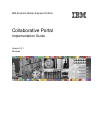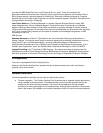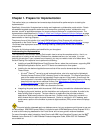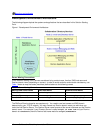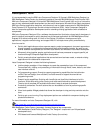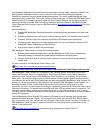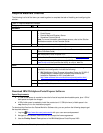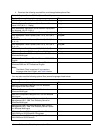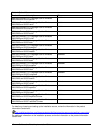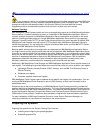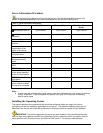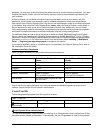
Chapter 1. Prepare for Implementation
This section helps you understand and execute steps that should be performed prior to starting the
implementation.
Specifically, this solution illustrates how to design and implement a collaborative portal solution. Portals
are websites targeted at specific audiences and communities, providing content, collaboration, and
services, as well as applications access, for target audiences delivered in a customized manner. The
implementation steps described in Chapter 2. Install and Configure Essential Solution Software
on page
12 can be used as a starting point for building your own customized portal, or simply as an illustration for
demonstration or learning purposes.
The primary focus of this solution is to install IBM WebSphere Portal Express with collaborative
components on the Portal Server. Chapter 2. Install and Configure Essential Solution Software
on page
12 outlines other deployment scenarios including installing a base portal without the collaborative
components.
The paths for following variations are identified for you throughout.
Understanding the Implementation
The instructions in this Solution Starting Point explain how to set up the complete solution - that is, no
assumptions of existing e-mail servers, Web servers, database servers, etc. are made. If you are
installing this solution in your customer's environment, you may not need to install all of these items. This
Solution Starting Point explains how to perform the following:
● Installing a base IBM WebSphere Portal Express Server, where the portal server, supporting IBM
WebSphere Application Server, and HTTP server are combined on one system.
● Installing the two backend application servers that will be used to demonstrate this solution.
These include:
○ A Lotus
(R)
Domino
(R)
server for e-mail and applications, also to be used as the Lightweight
Directory Access Protocol (LDAP) directory server in this example. This Domino server also
acts as the master server for the secondary Domino servers in the domain. Even though the
Domino product is included in IBM WebSphere Portal Express V6.0, using Domino in the way
described here requires an additional license. See What's New in Version 2.2.1 of this
Solution Starting Point on page iv for more information.
○ A Lotus Domino server for IBM Lotus Sametime Connect
● Integrating the portal server with the external LDAP directory to enable the collaborative features.
● Configuring the portal interface, and the installation and configuration of portlets. A portlet is the
basic building block of a portal. The term refers to an application that provides access to
applications, Web-based content or other services. Portlets usually display their contents in a
small window-like box within the portal framework. Similar to a window in a PC desktop, each
portlet owns a portion of the browser or personal digital assistant (PDA) screen where it displays
results.
This portal solution does not require a database server, but your customer could choose to use one
for data storage. IBM DB2 Express Edition is included as part of IBM WebSphere Portal Express V6.0; it
is used as the underlying database for the Portal Server and not as a generic relational database.
For more information about integrating Lotus Domino with IBM Lotus Sametime Connect, see the IBM
(R)
Redbook Lotus Domino 6.5.1 and Extended Products Integration Guide, SG24-6357-00. Redbooks
(TM)
are available at:
1 Collaborative Portal: Implementation Guide



